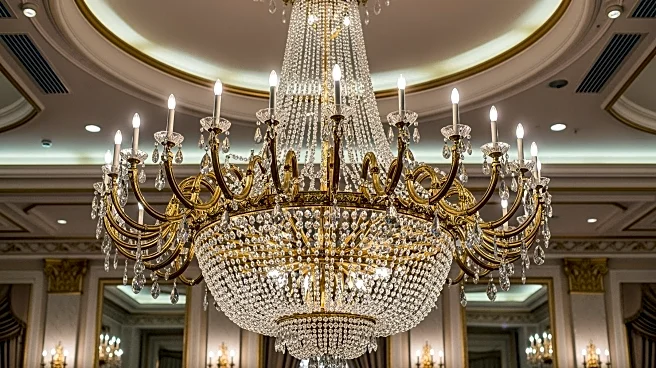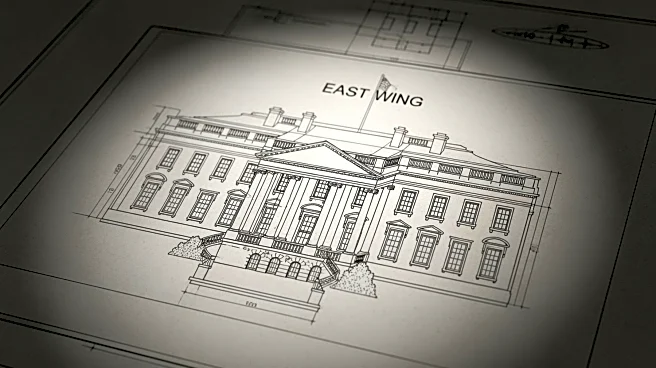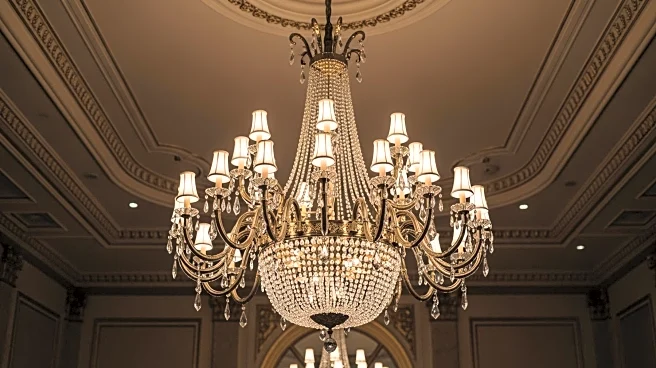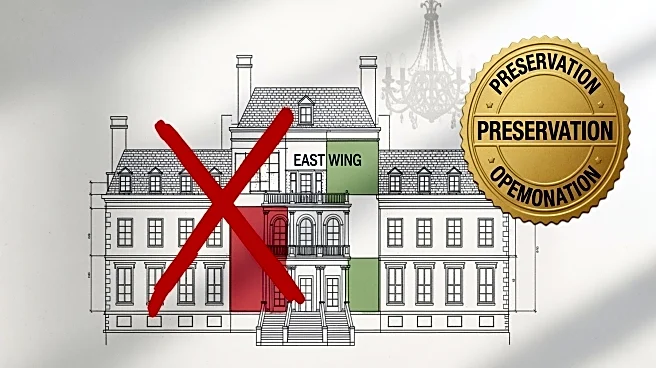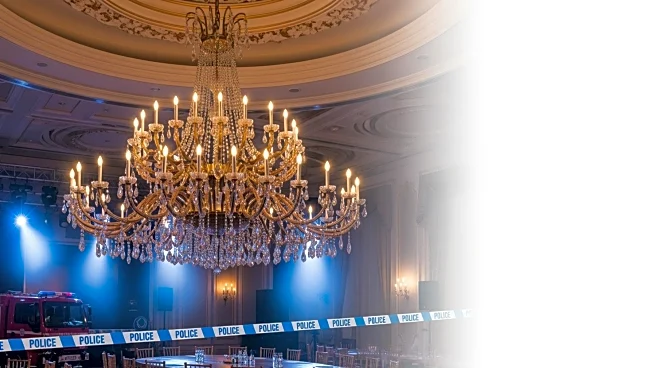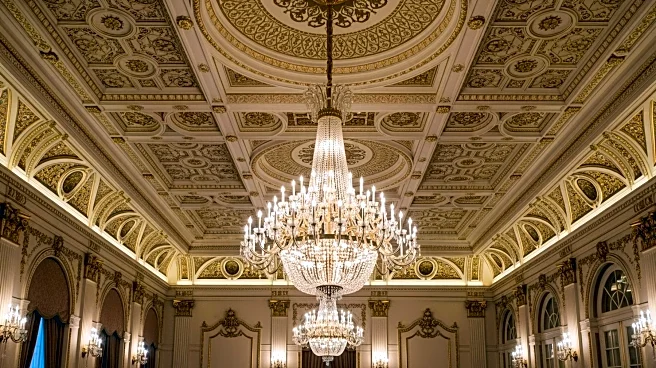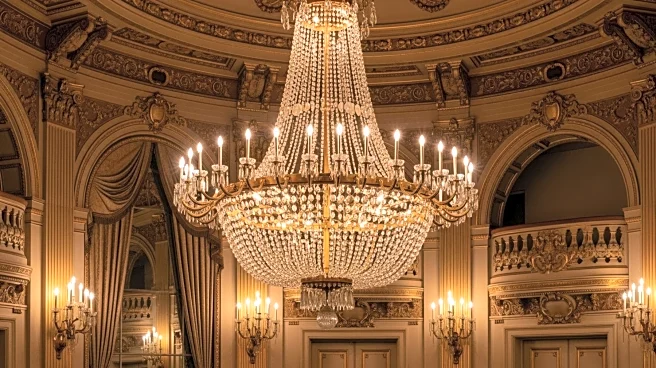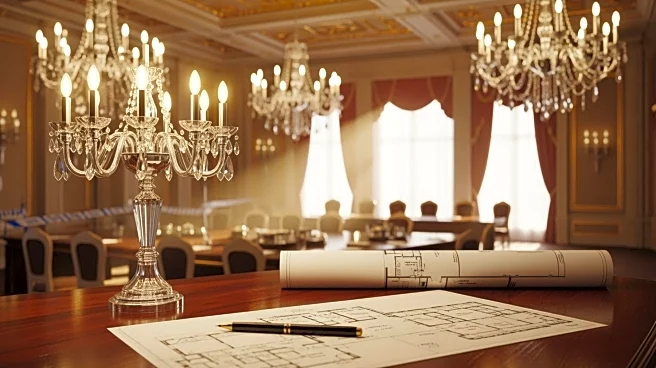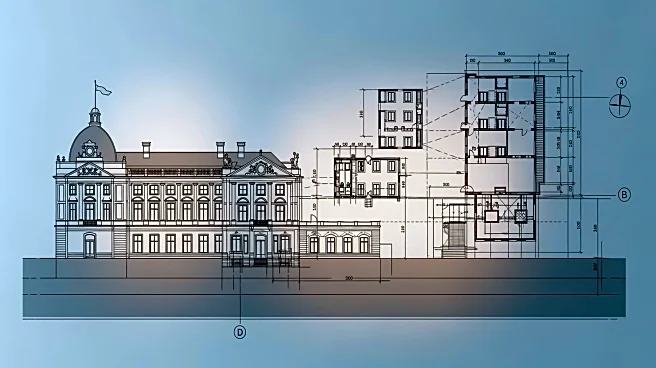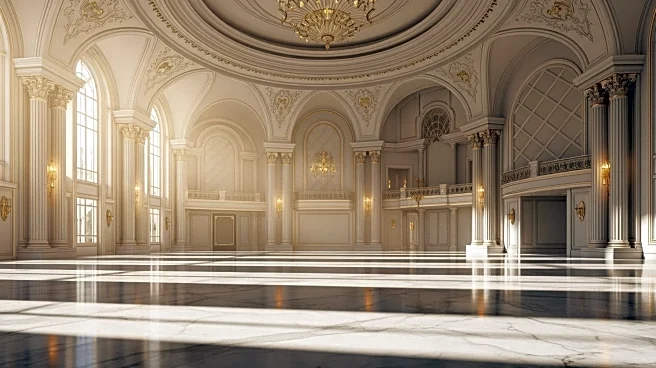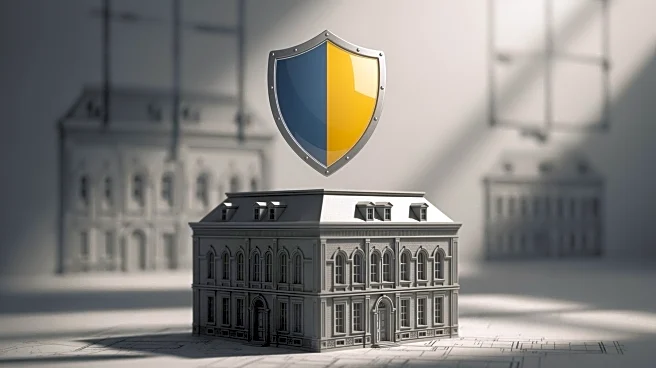What's Happening?
President Donald Trump announced an increase in the estimated cost of the new ballroom being added to the White House, raising the price tag to $300 million. This marks a $100 million increase from the previous
estimate of $200 million announced in July. The construction involves tearing down the facade of the East Wing, which has sparked backlash from critics who view the project as an unnecessary vanity endeavor. The National Trust for Historic Preservation has expressed concerns about the ballroom's size, suggesting it could overwhelm the existing White House structure. Despite these criticisms, Trump has defended the project, stating it will be funded entirely by private donations, although the White House has not disclosed the full list of donors.
Why It's Important?
The decision to construct a new ballroom at the White House has significant implications for public perception and historical preservation. Critics argue that the project is a misuse of resources, especially during a government shutdown, and raises ethical concerns due to the lack of transparency regarding funding sources. The involvement of major corporations and wealthy individuals in funding the project could lead to potential conflicts of interest. Additionally, the construction could alter the historical integrity of the White House, a concern highlighted by preservationists. The project reflects broader issues of governance and priorities within the Trump administration, impacting public trust and historical conservation efforts.
What's Next?
The White House has stated that the ballroom will be completed before the end of Trump's term in January 2029. However, ongoing criticism and calls for transparency may lead to further scrutiny and potential legal challenges. Preservationists and political opponents may continue to push for a pause in construction until a thorough review is conducted. The administration's handling of the project could influence future decisions on White House renovations and the role of private funding in government projects.
Beyond the Headlines
The construction of the ballroom raises deeper questions about the balance between modernization and preservation of historical sites. It highlights the ethical considerations of using private donations for public projects, especially when donor identities are not fully disclosed. The project could set a precedent for future administrations regarding the use of private funds for government property enhancements, potentially influencing how historical sites are managed and funded.
